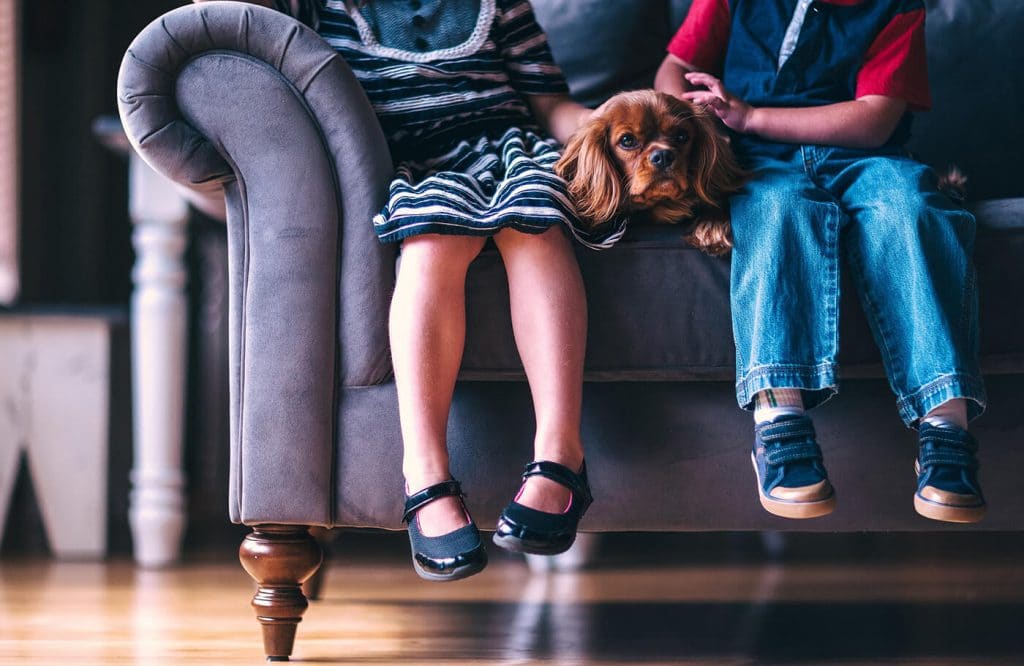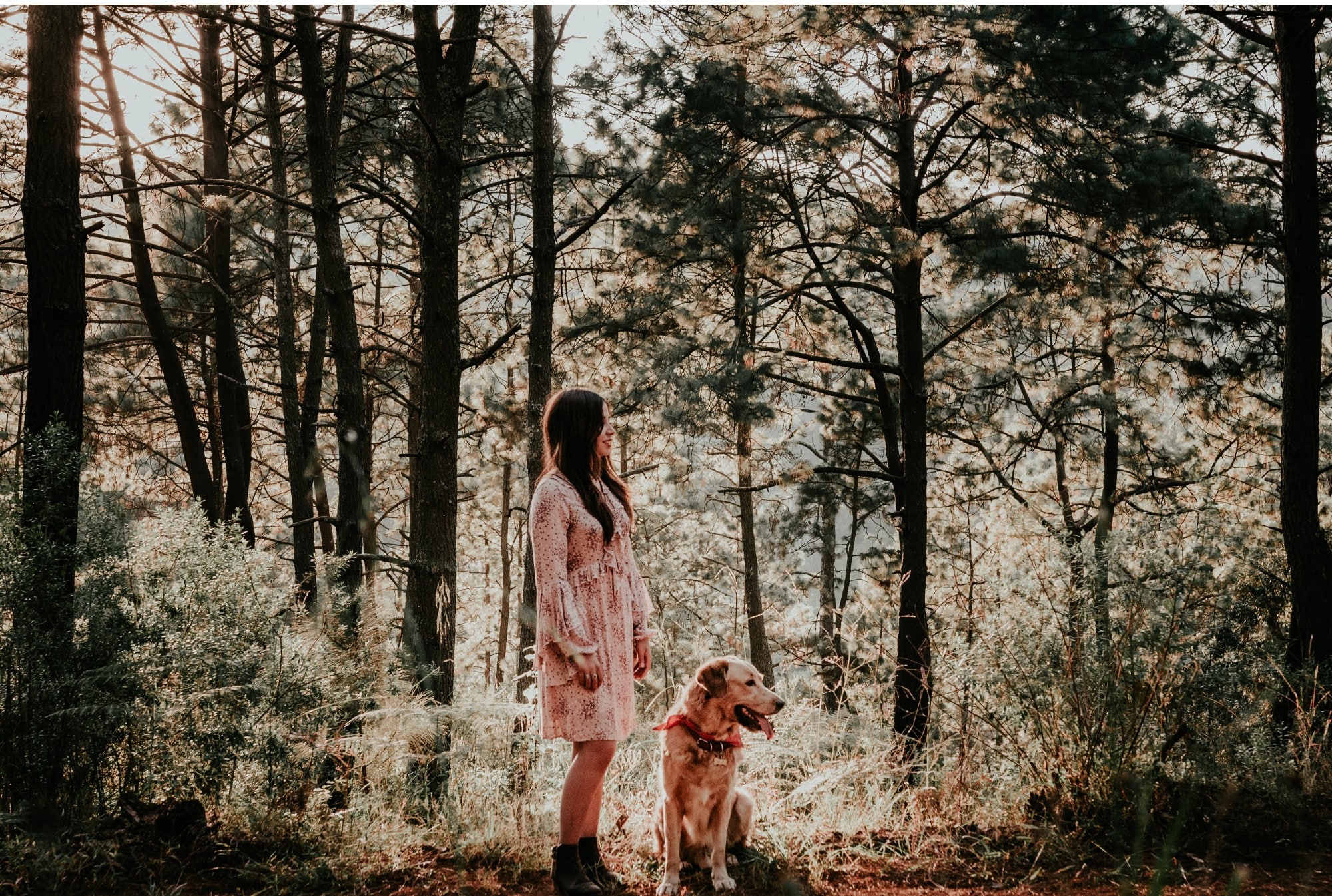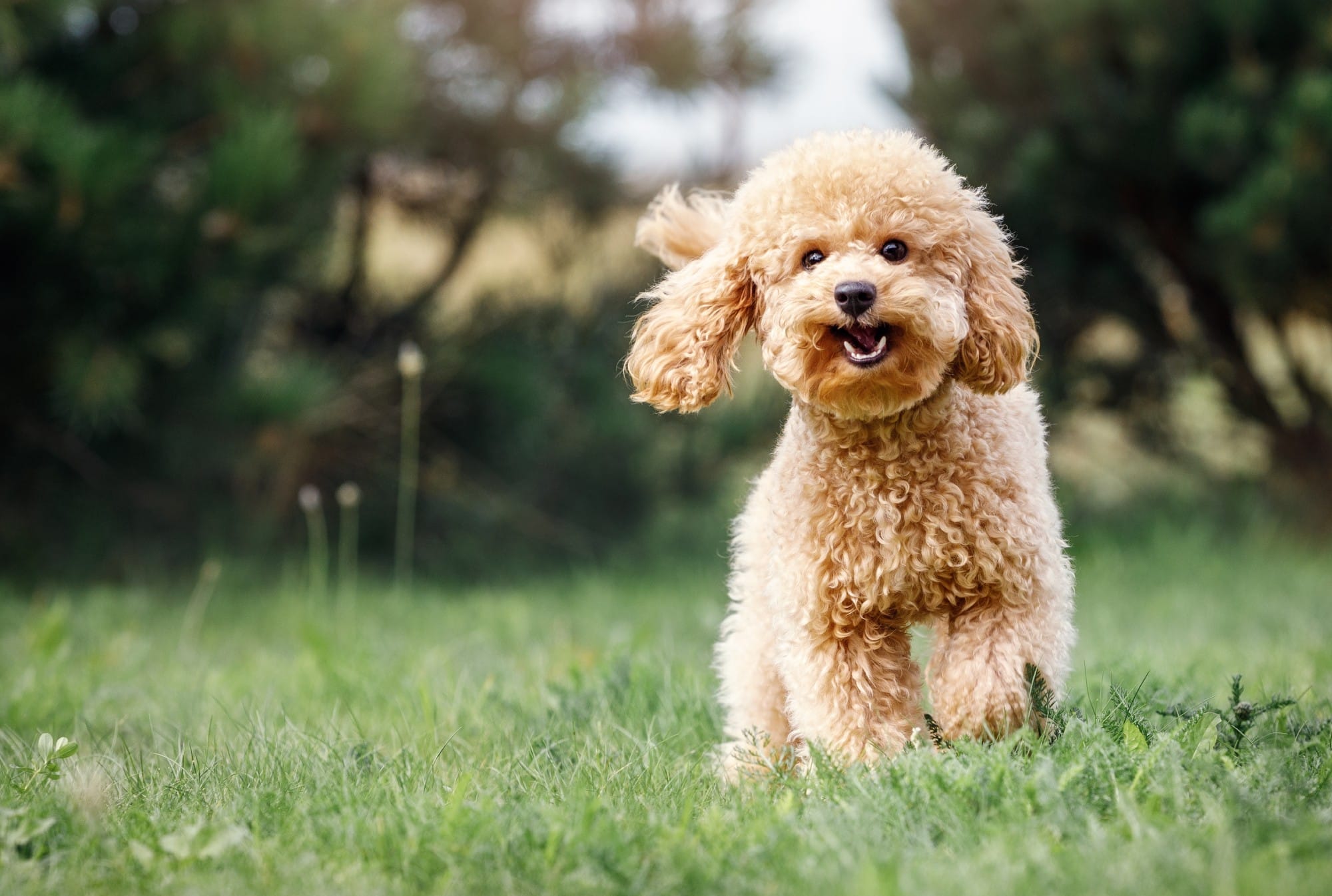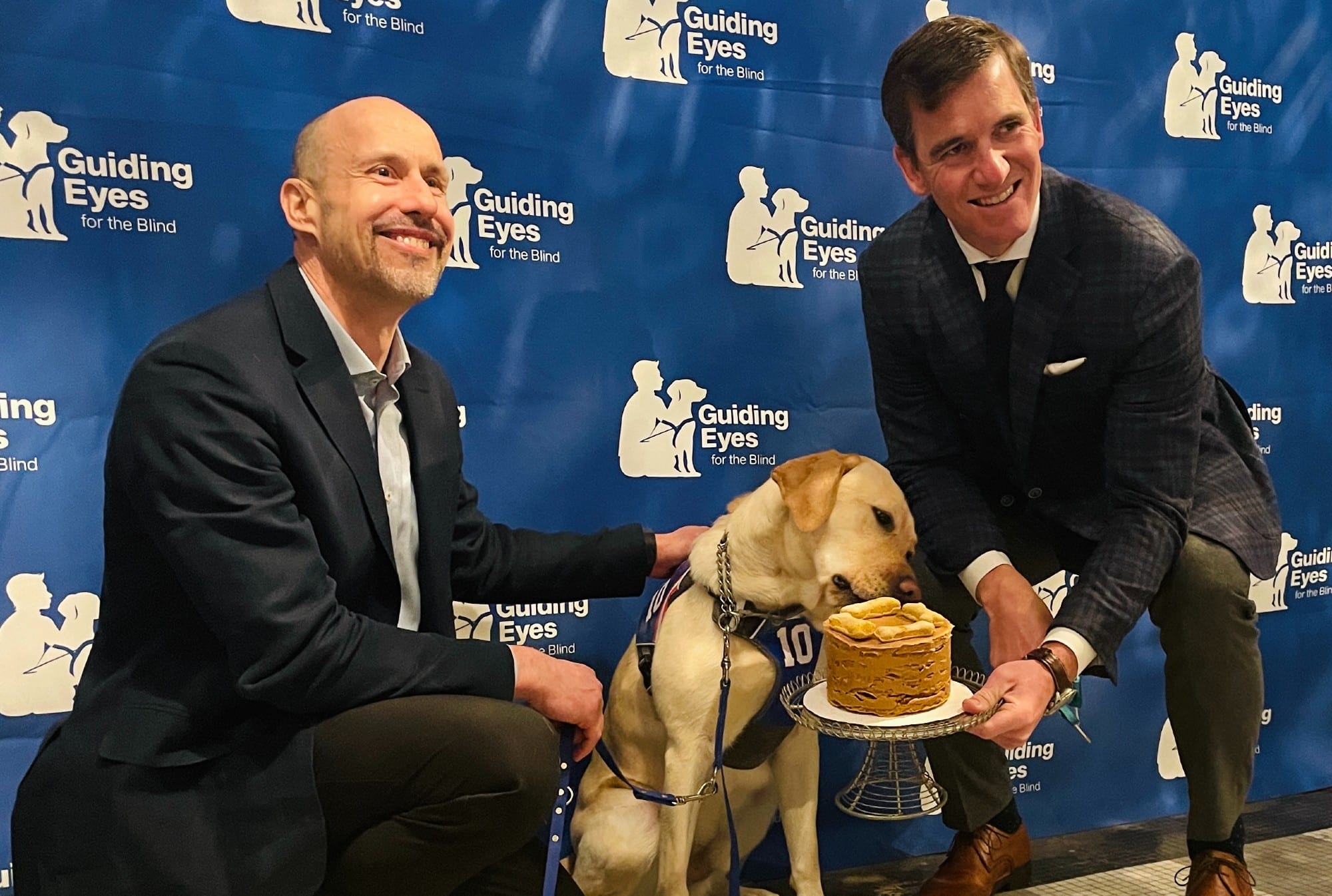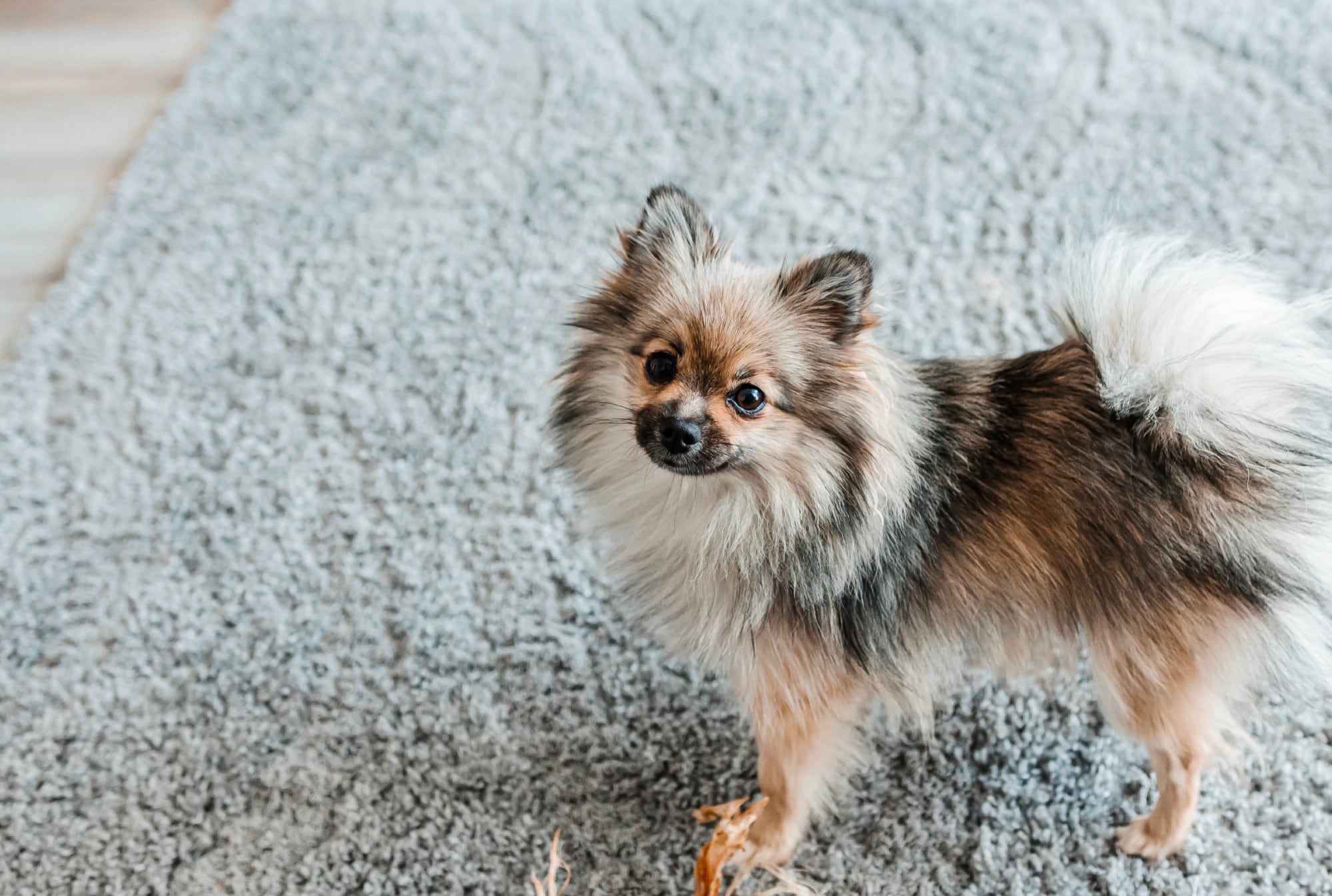While many people believe that their dog must be trained to be kid-friendly, in reality, teaching children how to be gentle with the family dog (and all dogs respectively) may be a better option for keeping children — and their dogs — safe from injury.
A dog can be a child’s most cherished companion, but it still takes some work to protect that friendship. There are several reasons why a dog may end up biting a child (and it doesn’t always mean aggression), but despite the reason, when a dog bites a child, it’s always shocking.
Many dogs are afraid of young kids because children move erratically and touch dogs roughly. The level of children’s voices is inconsistent. Kids love to hug their dogs tightly around their neck, but many dogs find that uncomfortable — or even frightening. All this behavior can sometimes result in the family dog biting a child.
Related: Dog Learns to Read to Help Children With Their Own Reading Skills
While dogs’ body language indicates when they don’t like what’s happening, most children and many adults don’t know how to interpret the signs. When nothing a dog does works, eventually the dog may nip or bite a child as a last resort.
The proper way to deal with a dog that bites is to prevent it happening in the first place. Children of all ages must be taught how to treat and touch a dog gently. Young children should always be supervised around dogs — no matter how friendly and loving the dog is by nature.
Lauren Novack, an associate certified dog behavior consultant at Behavior Vets of NYC, teaches a Family Paws Parent Education class at NYU Langone called “Dogs & Storks,” in which she counsels parents about what are and aren’t appropriate interactions between dogs and children.
“There’s an excellent phrase we use at Family Paws: ‘invites decrease bites,’” she tells This Dogs Life. “This means that an adult should be inviting the interactions between dogs and children. When not supervised, dogs and young children shouldn’t have access to each other.”
To protect both children and dogs, teach your children the correct way to interact with the family dog.
Gentle Touch
Children should be taught that the dog is not a toy. Pulling tails, grabbing fur, poking eyes, pulling ears and riding on a dog often cause discomfort and/or pain. Even the calmest of dogs may have a limit to how much he will tolerate. Eventually, if all the dog’s attempts to communicate that he doesn’t, in fact, enjoy having his tailed pulled, he will resort to the kind of behavior that is hard to misunderstand: growling, snarling, snapping and even biting.
Along with teaching your child how to correctly pet a dog (and where), instigate some rules:
- Do not pull the dog’s tail
- Do not pull the dog’s ears
- Do not pull or grab the dog’s fur
- Do not stomp on the dog’s paws
- Do not poke at the dog’s eyes
- Do not sit on or ride the dog
- Do not bounce on the dog
- Do not hit or kick the dog
Teach your children that they can pet the dog with an open hand on the dog’s back, or if the dog turns over, on the dog’s belly. If the dog likes it, the child can scratch the dog gently behind the ears and on the base of the tail.
Related: Why ‘Good’ Dogs Bite and How to Prevent It
How to Show Affection
Humans associate affecting with hugging and kissing. Dogs … not so much. Most dogs do NOT enjoy being hugged tightly around the neck. They don’t enjoy being kissed on the face either. To most dogs, this kind of physical behavior is aggressive, and it may trigger defensive behavior.
This can be tricky to explain since all your child is trying to communicate is love. Start by explaining that dogs communicate differently than humans. They use body language, smell, vocalizations and sight.
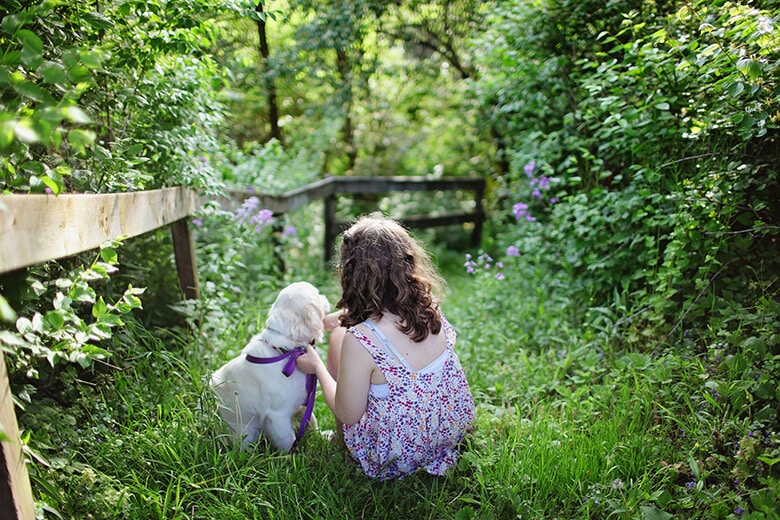
If your child wants to kiss the dog (and we all do), watch the dog’s body language. If the dog tenses, licks his lips and looks away, showing the whites of the eyes, tell your child to stop. The best way for your child (and yourself) to show affection to the dog is to pet, walk, feed and play with him.
Hands Off When the Dog Is Eating
“Dogs should be left alone when eating,” says Novack. This means hands-off during food preparation and while the dog is eating. Provide your dog with a place where she can eat in peace, and teach your child that this is the dog’s space.
This means that while the dog is eating or drinking:
- Your child cannot pet the dog.
- Your child cannot reach into the dog’s bowl.
- Your child cannot grab the dog’s collar.
- Your child cannot interrupt the dog in any way.
Even if your dog displays resource guarding behavior such as growling or showing teeth to protect his food, the time to help your dog let go of this behavior is NOT while he is eating — and your child should not be the trainer. A child that keeps interrupting a dog while he’s eating actually teaches that dog to protect his food by aggressive behavior.
A great way to bond over food is for children to give the dog treats when she isn’t eating a meal. Just be sure to train your dog to take the treat gently. The child should put the treat in their palm and offer it to the dog; this makes it easier for the dog to take it and reduces the potential for the dog to inadvertently nip little fingers.
Related: Here are 6 Books to Teach Kids the Right Way to Handle Dogs
Behave Respectfully
Kids have a lot of energy, and they often make a lot of noise. Some dogs think that’s fun, but many dogs feel threatened. Dogs are sensitive to the tone of a voice. A calm tone will keep the dog calm.
Teach children that when they yell at the dog, throw things at her (except when playing a game of fetch) or try to scare her, they are actually doing something that hurts their dog’s feelings .
Of course, being quiet and calm is not always realistic. That’s why your dog needs her own “safe space,” whether that’s a comfy crate, dog bed or even a room of her own. Teach your child that when the dog is in her safe space that means it’s time to leave the dog alone.
“Until a child reliably understands and follows rules about how to interact with a dog, active adult supervision is necessary,” says Novack. “‘Keeping an eye on them’ while doing other things around the house does not count as supervision.”
Play Properly
While “roughhousing” with some dogs can be fun, it’s never a safe way for a child to interact with their dog. The best way for a child to play with their dog is by teaching the dog to fetch.
Have your child hold two dog-friendly tennis balls (but be sure to choose the right size for your particular dog). Throw one ball, and when the dog brings it back, the child then shows (and squeaks) the ball they still have. The dog will then drop the ball in their mouth, and the child can throw another ball. This allows the child to safely pick up the ball the dog dropped.
Another safe way for a child to play with their dog is to teach the dog tricks and obedience commands. Consider enrolling your dog in a local class. It’s a good opportunity to observe the way your child interacts with the dog, and for your child to learn correct, humane training techniques. Once obedience is mastered, try out a tricks class.

What to Do If the Dog Bites
If the worst happens, and your dog bites your child, don’t jump to quickly to conclusions. “I do understand how difficult this is for parents,” Novack says. “Once a dog bites, trust is degraded and fear sets in.”
Her advice is to separate the dog and child for a few days. Make an appointment with your veterinarian to rule out any medical conditions (touching a dog in a place that is painful may make a dog snap involuntarily).
“Once the dust has settled, call the Family Paws Parent Hotline for advice (877-247-3407),” Novack recommends, adding that a behaviorist can help determine if this was a singular issue that could be easily managed or if the dog has been showing signs of stress around the child in other circumstances. “Every situation is different and there are many factors to consider moving forward to ensure that parents, child, and dog are all safe and happy,” she adds.
Related: Why Do ‘Friendly’ Dogs Bite?













